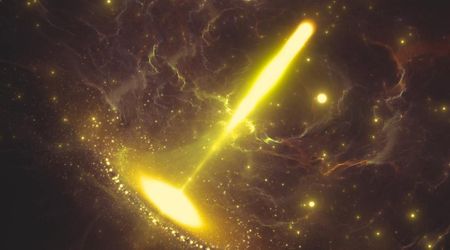SpaceX's Starship breaks apart again—but Elon Musk calls it a win: 'Big improvement over last flight'

SpaceX's Starship had another test flight failure on May 27, making it three in a row. The spacecraft reached space successfully, but then lost attitude control, leading to an uncontrolled reentry. SpaceX's ninth flight mission, launched from Starbase, Texas, was briefly delayed because of a ground equipment issue. This mission was supposed to fix the engine problems that affected the two previous flights in January and March, but things did not go as planned. However, much to Elon Musk's delight, the mission was successfully able to use the Super Heavy booster B14 for the second time. The booster first flew earlier this year during Flight 7, as reported on SpaceNews.
Immediately following the failure, Elon Musk posted on X, "Starship made it to the scheduled ship engine cutoff, so big improvement over last flight! Also, no significant loss of heat shield tiles during ascent." He further added, "Leaks caused loss of main tank pressure during the coast and re-entry phase. A lot of good data to review. Launch cadence for the next 3 flights will be faster, at approximately 1 every 3 to 4 weeks."
Starship made it to the scheduled ship engine cutoff, so big improvement over last flight! Also, no significant loss of heat shield tiles during ascent.
— Elon Musk (@elonmusk) May 28, 2025
Leaks caused loss of main tank pressure during the coast and re-entry phase. Lot of good data to review.
Launch cadence for…
In turn of prior attempts, this Starship test saw its engines function as intended, shutting down after propelling the vehicle into its planned suborbital trajectory. However, the video from the spacecraft immediately after the engine shutdown revealed it was venting propellants and slowly rotating. About 30 minutes post-liftoff, SpaceX confirmed a problem with Starship. Dan Huot, a host for the SpaceX webcast, stated, “We are in a little bit of a spin. We did spring a leak in some of the fuel tank systems inside Starship.” He added, “At this point, we’ve essentially lost our attitude control with Starship.”
Watch Starship's ninth flight test → https://t.co/Gufroc2kUz https://t.co/NYF0ZMyeGp
— SpaceX (@SpaceX) May 23, 2025
The loss of attitude control rendered a controlled re-entry impossible. Consequently, SpaceX opted to "passivate" the vehicle by venting its remaining fuel before atmospheric re-entry. Intermittent video feeds depicted Starship commencing its re-entry just over 40 minutes after lift-off, showing visible damage to a flap before telemetry ceased around 47 minutes into the flight. The re-entry took place over a section of the Indian Ocean where air and sea navigation warnings had been established, per SpaceNews.
Starship’s ninth flight test marked a major milestone for reuse with the first flight-proven Super Heavy booster launching from Starbase, and once more returned Starship to space → https://t.co/Gufroc2kUz pic.twitter.com/RNJkj5OobP
— SpaceX (@SpaceX) May 28, 2025
Additionally, SpaceX did not achieve all test objectives for the Super Heavy booster. However, this particular flight was notable as it marked the first use of a previously flown booster, B14, which had been part of Flight 7. SpaceX had stated before the launch that it would not attempt to return the booster to the launch site, instead focusing on tests designed to optimize the vehicle's flight profile and conserve propellant. While these booster tests initially appeared successful, the vehicle was destroyed when its engines ignited for what was intended to be a final landing burn.
The mission also aimed to open Starship's payload bay door and release eight simulated next-generation Starlink satellites, which would follow suborbital paths and re-enter separately. Two prior failures stemmed from distinct, unrelated issues within the Starship upper stage's propulsion system. Despite Musk's confidence in SpaceX's mission, this latest failure, however, intensifies questions regarding SpaceX's progress in developing Starship. Doubt has also been expressed in its capacity to execute vital missions, such as the Artemis 3 lunar landing, currently slated for mid-2027, as per the outlet.









